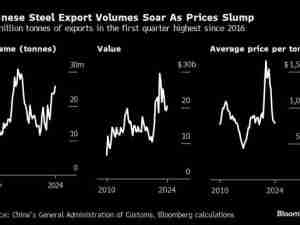A collaboration of international businesses and Dutch universities have embarked on an initiative to improve the availability of empty containers for return logistics. The ultimate goal of the project is to match the transportation requirements of returning products with the availability of empty containers. The group recently completed a first-phase study, which primarily involved market research and analysis.
Return logistics, the process of forwarding products back to manufacturers for recycling, repair, maintenance, and end-of-life disposal, is becoming increasingly important to global supply chains and to business at some of the world's largest ports. At the same time, container imbalances have strained supply chain and port resources. According to Drewry Shipping Consultants, 60% of containers on North American routes returned to Asia empty last year. That figure was on 41% on European routes.
One of the goals of Efficient Closed loop supply chain Optimization (ECO), as the project is known, is to contribute a solution to container imbalances, according to Harold Krikke, an associate professor of economics and business administration at the University of Tilburg in the Netherlands, and one of the directors of the program. ECO's participants include the Port of Rotterdam, Contell, IBM, Device Global, Transumo, and three Dutch universities.
'It is also expected that the efficiency of return flows can be improved, resulting in less empty container miles,' Krikke said. 'Return freight will become an important volume for the main world ports. From the perspective of the container imbalance, return logistics will also be of growing importance to carriers.'
The project will initially focus on the waste paper and electrical and electronics markets. Waste paper exports to Asia are expected to grow in coming years, according to Krikke, while the electrical and electronic markets generate $50 billion annually in service and repair activities. That number is expected to grow, he said, especially in the European Union, where mandated end-of-life returns of electronic equipment will soon come into force. Working out the details of a return logistics plan, the first phase of ECO has concluded, entails formidable challenges, issues that will be addressed in subsequent phases of the project.
Low value exports become viable
ECO seeks to match empty container flows and returns volumes, with a specific focus on the Europe-Asia connection, according to Krikke. 'The aim is to design, develop and nearly implement reverse logistics systems that reduce empty kilometers of containers and enhance re-use of recovered components and materials,' he explained. 'We are researching a cross section of return flows resulting from end-of-life responsibilities in Europe and their possible transport to reuse markets in Asia using empty containers.'
ECO's market research in the recovered waste paper industry has shown that demand in Asia is on the rise and that there is a developing market for lower quality recovered waste paper. Increasing Asian demand makes new sources of waste paper for export viable, including sources further away from the ports than today, according to Krikke.
'The economic growth in Asia as well as the decreasing availability of natural resources increases demand,' he said. 'New legislation on packaging will cause recovered waste paper volumes to rise to 800,000 tons per year to Asia from the Netherlands alone.'
ECO's research in the electrical and electronics markets indicates that demand for the commodities they can offer, scrap metals and plastics, are on the rise. The research shows, according to Krikke, that Europe currently exports two million tons annually of those products to China, one million to India, and half a million to Africa. Those volumes are expected to double over the next decade.
In addition, the US research firm Blumberg and Associates has found that the global service repair market has grown from $17 billion in 1994 to





